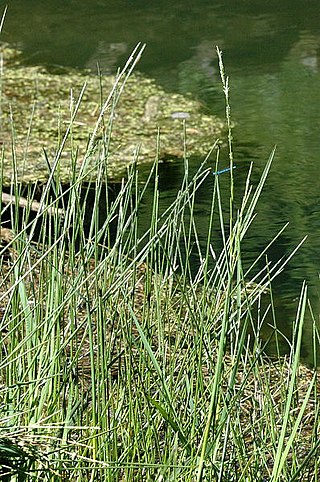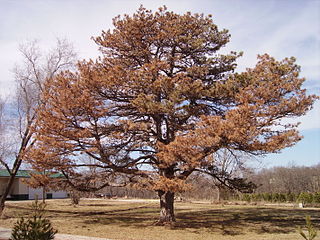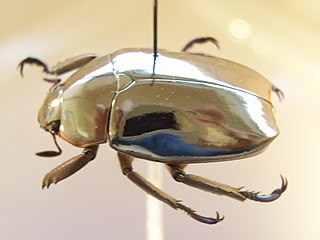
The Japanese beetle is a species of scarab beetle. Due to the presence of natural predators, the Japanese beetle is not considered a pest in its native Japan, but in North America and some regions of Europe, it is a noted pest to roughly 300 species of plants. Some of these plants include rose bushes, grapes, hops, canna, crape myrtles, birch trees, linden trees, and others.

The insects of the beetle family Chrysomelidae are commonly known as leaf beetles, and include over 37,000 species in more than 2,500 genera, making up one of the largest and most commonly encountered of all beetle families. Numerous subfamilies are recognized, but the precise taxonomy and systematics are likely to change with ongoing research.

Philodendron is a large genus of flowering plants in the family Araceae. As of June 2024, the Plants of the World Online accepted 621 species; other sources accept different numbers. Regardless of number of species, the genus is the second-largest member of the family Araceae, after genus Anthurium. Taxonomically, the genus Philodendron is still poorly known, with many undescribed species. Many are grown as ornamental and indoor plants. The name derives from the Greek words philo meaning friend and dendron 'tree'. The generic name, Philodendron, is often used as the English name.

The common cockchafer, also colloquially known as the Maybug, Maybeetle, or doodlebug, is a species of scarab beetle belonging to the genus Melolontha. It is native to Europe, and it is one of several closely-related and morphologically similar species of Melolontha called cockchafers, alongside Melolontha hippocastani.

Buprestidae is a family of beetles known as jewel beetles or metallic wood-boring beetles because of their glossy iridescent colors. Larvae of this family are known as flatheaded borers. The family is among the largest of the beetles, with some 15,500 species known in 775 genera. In addition, almost 100 fossil species have been described.

Histeridae is a family of beetles commonly known as clown beetles or hister beetles. This very diverse group of beetles contains 3,900 species found worldwide. They can be easily identified by their shortened elytra that leaves two of the seven tergites exposed, and their geniculate (elbowed) antennae with clubbed ends. These predatory feeders are most active at night and will fake death if they feel threatened. This family of beetles will occupy almost any kind of niche throughout the world. Hister beetles have proved useful during forensic investigations to help in time of death estimation. Also, certain species are used in the control of livestock pests that infest dung and to control houseflies. Because they are predacious and will even eat other hister beetles, they must be isolated when collected.

The eastern bettong, also known as the southern or Tasmanian bettong, is a small, hopping, rat-like mammal native to grassy forests of southeastern Australia and Tasmania. A member of the rat-kangaroo family (Potoroidae), it is active at night and feeds on fungi and plant roots. Like most marsupials, it carries its young in a pouch. The eastern bettong is under pressure by introduced predators and habitat loss. The subspecies on mainland Australia is extinct, but populations of the Tasmanian subspecies have been reintroduced there.

Phyllophaga is a very large genus of New World scarab beetles in the subfamily Melolonthinae. Common names for this genus and many other related genera in the subfamily Melolonthinae are May beetles, June bugs, and July beetles. They range in size from 12 to 35 mm and are blackish or reddish-brown in colour, without prominent markings, and often rather hairy ventrally. These beetles are nocturnal, and are attracted to artificial lights in great numbers.

Melolonthinae is a subfamily of the scarab beetles. It is a very diverse group; distributed over most of the world, it contains over 11,000 species in over 750 genera. Some authors include the scarab subfamilies Euchirinae and Pachypodinae as tribes in the Melolonthinae.

Ipomoea pandurata, known as man of the earth, wild potato vine, manroot, wild sweet potato, and wild rhubarb, is a species of herbaceous perennial vine native to North America. It is a twining plant of woodland verges and rough places with heart-shaped leaves and funnel-shaped white flowers with a pinkish throat. The large tuberous roots can be roasted and eaten, or can be used to make a poultice or infusion. When uncooked, the roots have purgative properties.
Paenibacillus popilliae is a soil-dwelling, Gram-positive, rod-shaped bacterium. It is responsible for a disease of the white grubs of Japanese beetles.

Glyceria striata is a species of Glyceria which is known by the common names fowl mannagrass and ridged glyceria. It is native to much of North America, from Alaska and northern Canada to northern Mexico.

Glyceria fluitans, known as floating sweet-grass and water mannagrass, is a species of perennial grass in the genus Glyceria native to Europe, the Mediterranean region and Western Asia and occurring in wet areas such as ditches, riverbanks and ponds.

Naupactus is a genus of beetles in the weevil family Curculionidae, the true weevils. They are known commonly as whitefringed beetles. Many species of the genus are considered pests, both as larvae and as adults. The genus is native to the Americas, where it is distributed from Mexico to Argentina; the highest species diversity is in Brazil. Several species have been introduced to the United States and New Zealand.

A wilt disease is any number of diseases that affect the vascular system of plants. Attacks by fungi, bacteria, and nematodes can cause rapid killing of plants, large tree branches or even entire trees.

Galerucella calmariensis, sometimes Neogalerucella calmariensis, is a species of leaf beetle in the family Chrysomelidae. It is commonly known as the black-margined loosestrife beetle and is native to Europe and Northern Asia where both adults and larvae feed on purple loosestrife. It has been introduced in North America as a biological control agent for purple loosestrife.

Rutelinae or shining leaf chafers is a subfamily of the scarab beetles. It is a very diverse group; distributed over most of the world, it contains some 200 genera with over 4,000 described species in 7 tribes. Several taxa have yet to be described. A few recent classifications include the tribe Hopliini, but this is not generally accepted.

Donacia dentata is a species of leaf beetles of the subfamily Donaciinae.

Anisosticta novemdecimpunctata is a species of beetle in family Coccinellidae. It is found in the Palearctic.

Hypomeces pulviger, also known as the gold-dust weevil or green weevil, is a species of beetle in the true weevil family. The adult weevil can reach a length of about 14 mm (0.6 in) and is covered with iridescent green or yellowish-green dust-like scales all over the body. This species can be found in India, tropical Southeast Asia, and the Philippines. Both the larvae and adults are crop pests. The larvae live in and pupate in the soil, feeding on living plant roots. The adult weevils are long-lived, doing damage to foliage, and sometimes defoliating young bushes and nursery trees.



















